
© Jeff Busby. (Click image for larger version)
Australian Ballet
The Sleeping Beauty
Melbourne, State Theatre
15 September 2015
www.australianballet.com.au
With a feast of baroque extravagance that would please the Sun King himself, David McAllister’s new Sleeping Beauty for the Australian Ballet is destined for a long life in the company’s repertoire. While much of Petipa’s choreography remains intact, the design elements of the ballet are far from the standard solemnity of most productions, most often surrounded by towering, classical columns, arches, delicate pastel colours and misty backgrounds.
This Beauty is festooned with glitter and glamour, eye-popping colours, baroque wigs adorned with feathers and silk flowers, fairy wings, golden shoes and rather loveable white rats with big eyes painted on their puppet-like headpieces. Their long black jackets end with raggedy tails that flick elegantly this way and that.
Almost every scene in the ballet is framed with rows of twisted and curved 3D columns – sometimes intrusive – resembling ice cream cones or upturned unicorn horns. Their twistiness refers to Italian baroque architecture such as Bernini’s bronze ‘barley sugar’ columns in St Peter’s Basilica, just one of many baroque references in the ballet, designed by Gabriela Tylesova.
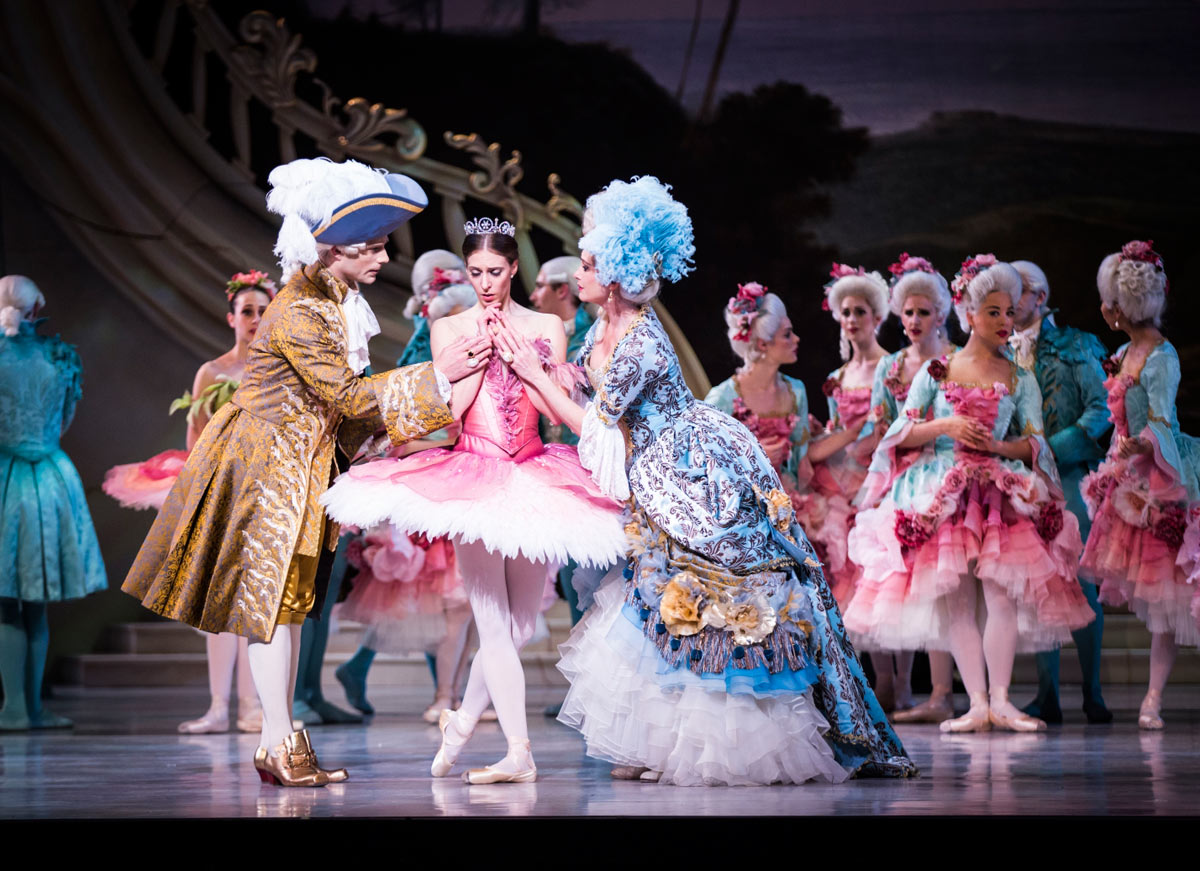
© Kate Longley. (Click image for larger version)
Premiering at the State Theatre at Melbourne’s Art Centre on Tuesday, the ballet is the first full-length production McAllister has created and staged himself during his long artistic directorship beginning in 2001, so the pressure was on, especially as the cost to the company was in excess of $A2 million (approx. £930K).
It was a brave move, but for McAllister there was more in that move than directing and producing, then adding snippets of new choreography here and there. With this production, the company now has a powerful Tchaikovsky trilogy in Peter Wright’s Nutcracker, Stephen Baynes’ Swan Lake and McAllister’s Sleeping Beauty, one that will see the Australian Ballet through many seasons to come and, in the case of Beauty, bestow a gift to McAllister himself. “McAllister’s Sleeping Beauty” will be his legacy – and presumably provide some ongoing income – long after he departs as artistic director (his current contract expires in 2017).
He has chosen a talented and experienced team in the award-winning Tylesova, the Australian Ballet’s music director and chief conductor, Nicolette Fraillon, the lighting designer, Jon Buswell and the dramaturge, Lucas Jervies.
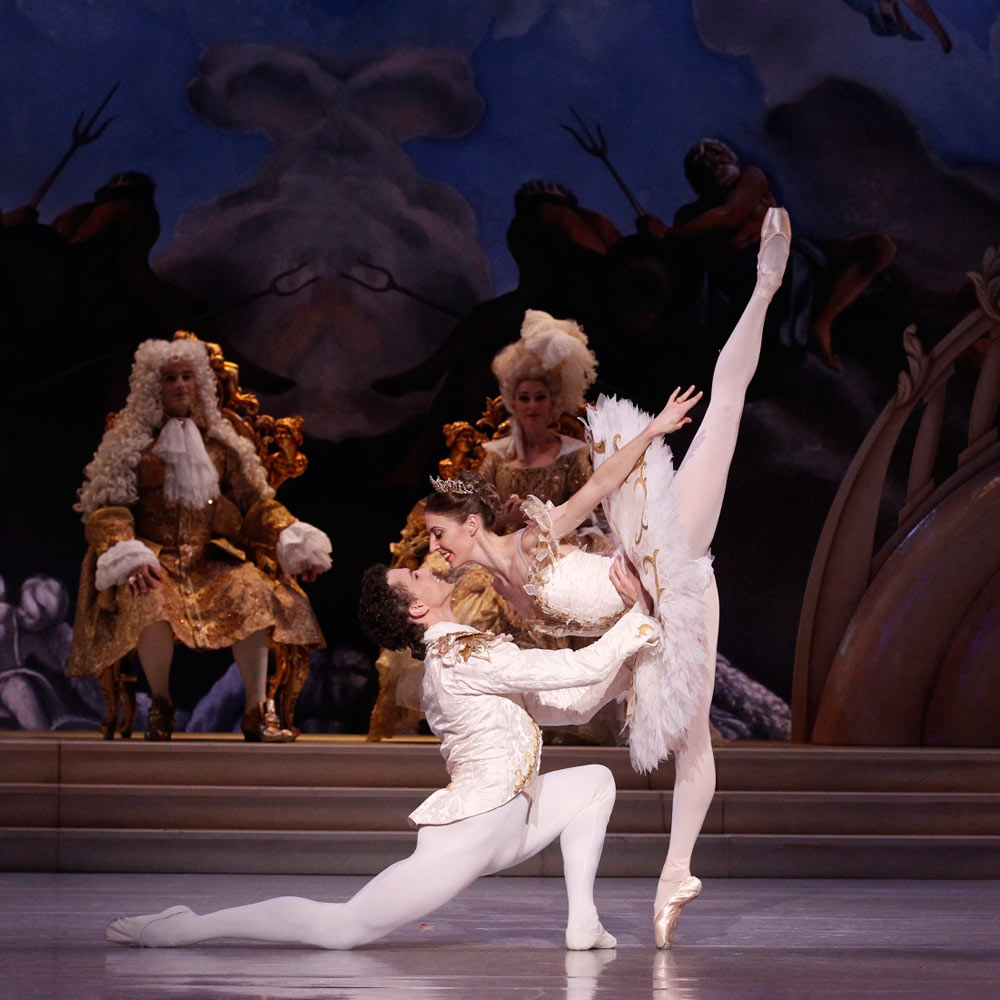
© Jeff Busby. (Click image for larger version)
McAllister’s first cast Aurora and Prince Desire were Lana Jones and Kevin Jackson, two principal artists who created a sense of gravitas and calmness within the busyness around them. Jones bounded onto the stage in Act I with joy, confidence and strength and none of the “is this OK?” shyness of many Auroras seeking the approval of her parents. Her Act I variation was impeccable, although there were a few nervous moments in the balances of the Rose Adagio.
Jackson, McAllister’s first cast favourite, has recently brought a new lightness and expressive presence to the stage. His Prince, simply dressed in his first appearance in white tights and top with a bronze-coloured waistcoat, was charming, with elements of the withdrawn Prince Siegfried or Des Grieux before they meet their match.
Amber Scott, who is also cast as Aurora in this season, was a gracious Lilac Fairy, delicate but with enough determination to challenge Carabosse, (Lynette Wills), a former principal with the Australian Ballet. Tylesova’s Carabosse is dressed in a feathery, glittery cinched-waist black dress that might have been designed by Jean Paul Gaultier. It’s a costume that accentuated Wills’ own beauty and her interpretation of a forgotten fairy, not as bitter as most revengeful Carabosses.
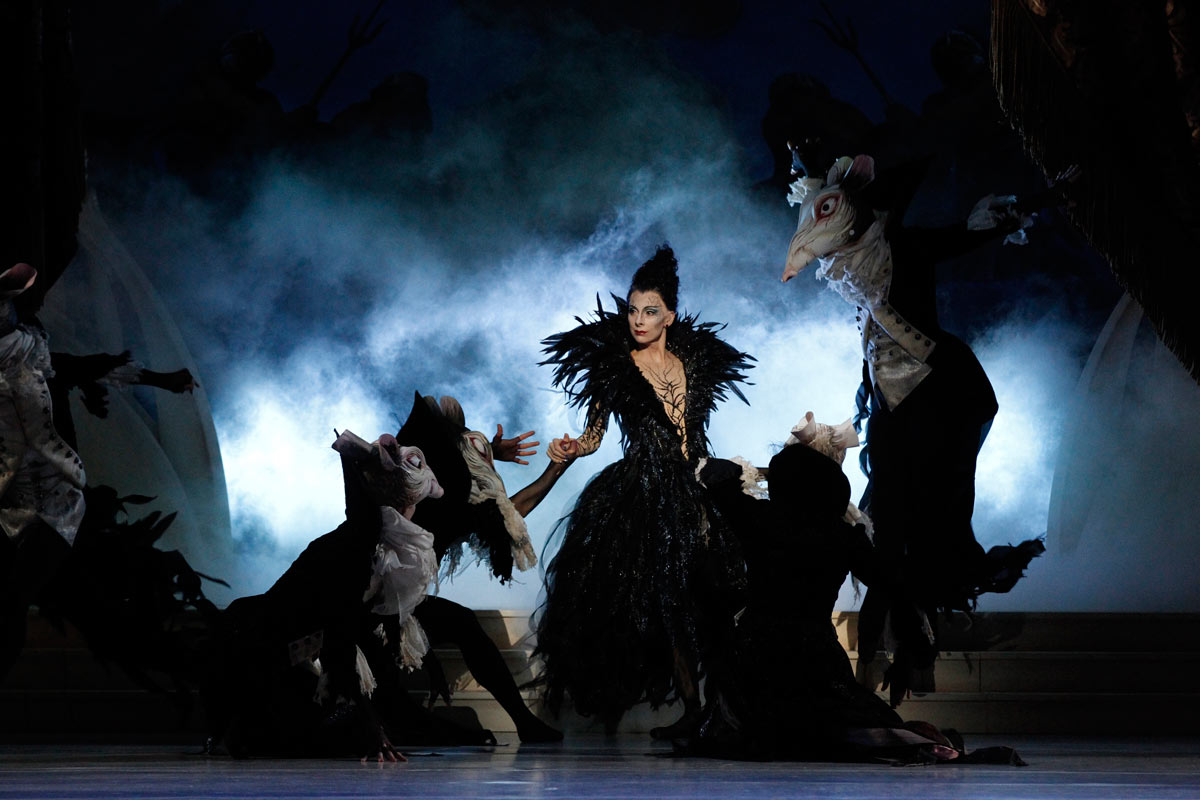
© Jeff Busby. (Click image for larger version)
The Bluebird/Princess Florine variation, danced by principals Chengwu Guo and Ako Kondo, was a showstopper. Dancing this pas de deux, the couple could be a highlight of any ballet gala around the world, and likely to trigger the same ecstatic response as they received on opening night.
McAllister’s biggest changes to the ballet include the elimination of the variations in Act 3, except for the Bluebird and Florine. But the White Cat, Puss in Boots, Cinderella, Prince Charming, Little Red Riding Hood and the Wolf still appear in the act as guests at a lavish masked ball that ends with the wedding, then coronation, of Aurora and Prince Desire. The premise is that we’ve seen them before in Act II as friends of the Prince or huntsmen. In that act they appear in Victorian clothes that match the colours they wear in Act 3 as guests dressed as fairy tale characters.
Other changes or modifications include a truncated hunting scene with no flirtations or blind man’s buff, a see-through crystal casket rather than the usual bed, as the place where Aurora sleeps (just a little bit creepy in a Snow White kind of way), new choreography for the Prelude fairies in Act 3, and no Panorama, in order to keep the production within a three-hour time frame, although, inevitably, it stretched beyond that on opening night.

© Jeff Busby. (Click image for larger version)
When Tylesova was commissioned by McAllister to design the ballet she decided against creating what she called “a period piece”. For her, that “wasn’t fun enough or interesting enough”. Instead, she said, “I thought it’s a fairy tale, we need to stylise it a bit more”. The stylisation reaches a pinnacle with Act 3’s colour scheme of cream, white and gold and giant candelabras soaring up to the ceiling. The Canary Fairy, called The Fairy of Musicality in this production, launches into a few fouettes, and two dancers appear in the costume of Louis XIV as the Sun King. As they prepare for their coronation, Aurora and Prince Desire wear exceptionally long trains of gold organza while a sunburst and glittery gold confetti drop mark the end of the ballet.
Over time, some of the design elements of the ballet may be pulled back to allow more focus on the dancers and the patterns of choreography. But McAllister should be, will be, happy with the result of all the effort, all that money raised and spent and the reaction of an entranced audience on opening night.













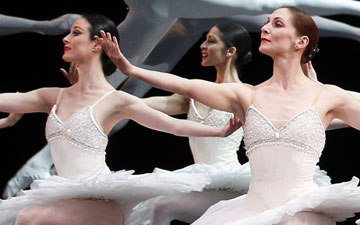

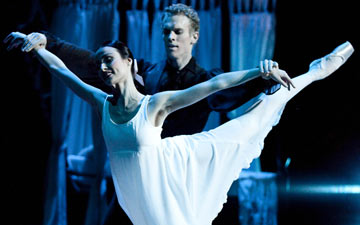

You must be logged in to post a comment.